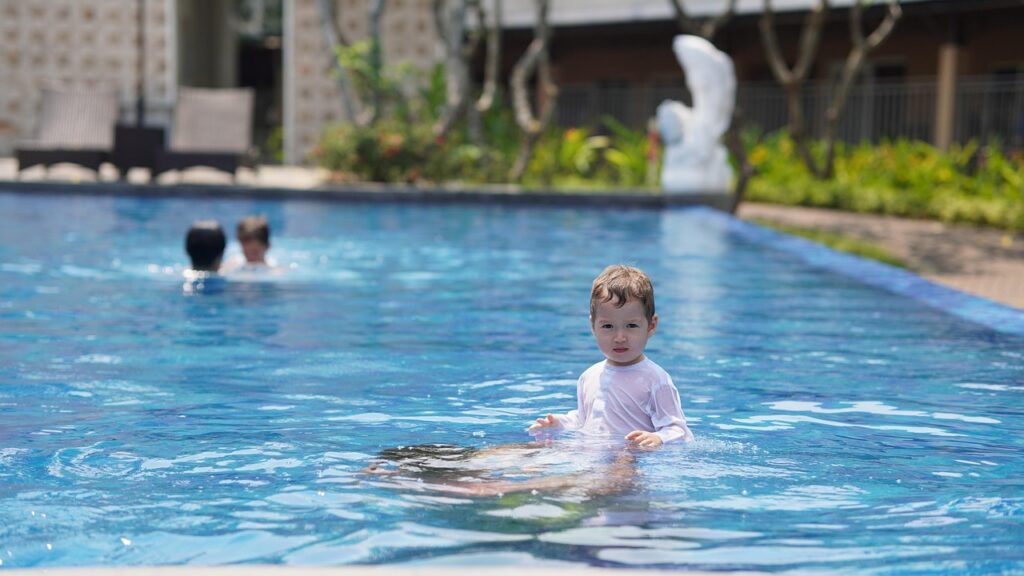Finding swimming lessons for kids nearby is straightforward with many local programs designed to teach water safety, basic skills, and stroke development. Whether parents seek structured lessons through community centers like the YMCA or specialized swim schools, options cater to varying ages and skill levels.
The best swimming lessons for kids near you combine certified instructors, small class sizes, and a focus on safety and progression. These programs often include stages for beginners as well as advanced swimmers, ensuring children develop confidence and competence in the water at their own pace.
Many local swim schools also emphasize creating a positive learning environment that encourages social interaction and fun. This makes lessons not only educational but also engaging, helping kids build a long-lasting relationship with swimming and water activities.
Finding Swimming Lessons for Kids Near Me
Finding the right swimming lessons involves searching local options, comparing program details and costs, and ensuring safety standards are met. Each factor plays a critical role in choosing a program that fits a child’s needs and provides a secure learning environment.
How to Search for Local Swim Classes
Begin by using targeted online searches including terms like “kids swim lessons near me” or “children’s swimming programs in [city].” Local community centers, YMCAs, and dedicated swim schools often appear in results.
Parents should also explore social media groups and neighborhood forums where local recommendations and reviews can be found. Contacting local recreation departments directly can uncover lesser-known programs.
Setting geographical preferences on map-based platforms can help identify the nearest facilities. It’s important to note the variety of lesson formats offered, such as parent-and-tot classes, group lessons, or private instruction.
Comparing Programs and Pricing
Program offerings vary widely by age groups, skill levels, and lesson frequency. For example, some schools have progressive levels and promote advancement only when a child is ready, without minimum class requirements.
Pricing can range from affordable community center classes to more premium swim academies. Check if materials, pool fees, or equipment rentals are included.
Look for added value like certification upon completion, milestone celebrations, or specialized instruction methods. Transparent pricing and clear descriptions of what’s included are signs of a trustworthy program.
Evaluating Safety Standards
Safety is a key consideration for swim lessons. Examine if the facility is certified by recognized swimming or aquatic organizations and if instructors hold current lifesaving and first aid certifications.
Check that the pool environment has proper supervision, clear water quality standards, and child-friendly facilities. Programs should emphasize water safety alongside skill development.
Viewing or inquiring about student-to-instructor ratios can indicate how much individual attention each child receives. Programs that integrate parents into early lessons often improve water confidence and safety awareness.
What to Expect from Kids’ Swimming Lessons
Kids’ swimming lessons focus on building skills step-by-step, ensuring safety, and fostering a positive experience. Parents can expect structured programs led by trained instructors, with clear guidance on how to prepare their children and what to bring.
Lesson Structure and Curriculum
Lessons often begin with basic water adjustment activities like blowing bubbles and floating. Children then progress to kicking, basic strokes, and safe water entry and exit techniques.
Programs vary, but many cover:
- Breath control
- Floating on front and back
- Flutter kick and arm movements
- Introduction to swimming strokes
Classes typically run in small groups to allow personalized attention. Skill progression is gradual, ensuring children build confidence and competence over time. Games and toys may be used to keep kids engaged and motivated.
Certified Instructors and Qualifications
Instructors usually hold certifications in swimming instruction and water safety, such as Red Cross or YMCA credentials. They are trained in child development and emergency procedures.
The instructor’s role includes assessing each child’s skill level and setting realistic goals. They communicate progress and safety concerns with parents. Qualified teachers adapt lessons to individual needs, offering encouragement while maintaining a safe learning environment.
Preparation Tips for Parents
Parents should bring swimwear, towels, goggles, and any required swim aids. Labeling items helps avoid mix-ups in group classes.
Before lessons, parents should talk to their child about what will happen to reduce anxiety. Arriving early gives time to familiarize the child with the environment. Encouraging a positive attitude and celebrating small achievements helps sustain motivation and a love for swimming.
